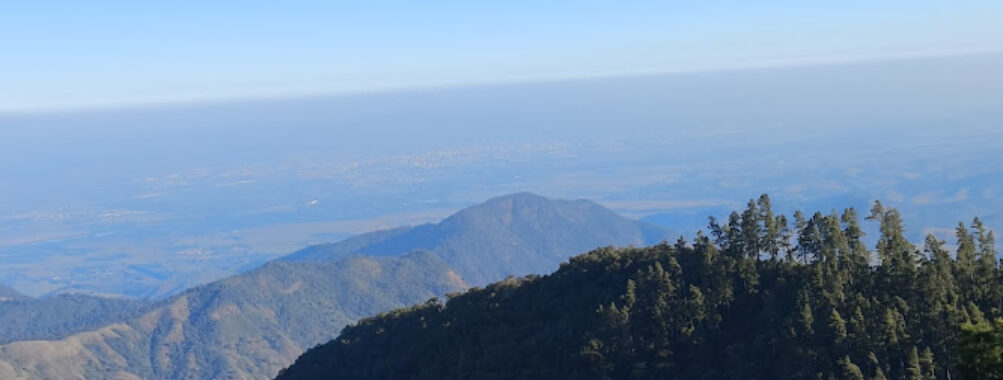
Itapeva Park
Table of Contents
Description
Itapeva Park is one of those places that quietly takes your breath away without trying too hard. Sitting along the southern coast of Brazil, it’s part of a protected area that feels like a pocket of wild beauty – the kind of place you go to when you need to swap the noise of the city for the sound of waves and wind through coastal vegetation. The park stretches over dunes, grasslands, and a long, wide beach that seems to go on forever. It’s not overly manicured or “touristy” in the way some attractions can be, which is honestly part of its charm. You feel like you’re stepping into a slice of nature that hasn’t been overly dressed up for visitors, yet still offers enough infrastructure to make your day comfortable.
There’s a certain ruggedness here – the sand can be wild, the Atlantic breeze can be strong, and the weather can change its mood in minutes. But that’s part of the magic. On a sunny day, the ocean sparkles like it’s showing off. On a cloudy, misty morning, the place feels almost cinematic, like a scene from a travel documentary. And if you’re into photography, you’ll probably find yourself stopping every few steps to capture another angle of the dunes, the sea, or the native plants that dot the landscape.
It’s also worth noting that Itapeva Park is accessible for visitors with mobility needs. There’s a wheelchair accessible entrance and parking, which is something I personally think more natural attractions should prioritize. It means more people can enjoy it without worrying about whether they’ll be able to navigate the space. While it’s not a luxury resort-style setup (and I wouldn’t want it to be), it’s a place where you can bring a picnic, take a long walk, or just sit and watch the ocean do its thing for hours.
Key Features
- Expansive coastal dunes offering panoramic views of the Atlantic Ocean
- Long, open beach that’s perfect for walking, jogging, or simply unwinding
- Native vegetation and unique coastal ecosystems to explore
- Wheelchair accessible entrance and parking facilities
- Opportunities for birdwatching and spotting local wildlife
- Peaceful atmosphere away from heavily commercialized tourist spots
- Photogenic landscapes in all kinds of weather conditions
Best Time to Visit
Honestly, the “best” time really depends on what you’re after. If you want warm weather, clear skies, and that classic beach vibe, then the Brazilian summer months (December to March) are your sweet spot. The sun is strong, the sea is inviting, and the days feel endless. But keep in mind, summer also means more visitors – though Itapeva Park never feels as crowded as the more urban beaches nearby.
If you’re more into long, contemplative walks in cooler weather, try visiting in the shoulder seasons – April to May or September to November. The temperatures are milder, the light is softer (perfect for photography), and you might have stretches of the beach all to yourself. Winter (June to August) can be windy and a bit chilly, but it has its own charm. I once visited in July, and while I kept my jacket zipped up tight, the moody skies and crashing waves made for an unforgettable experience.
How to Get There
Reaching Itapeva Park is straightforward if you’re already in the southern part of Brazil. Most travelers come from nearby towns or cities along the coast, and the drive itself can be part of the adventure. The roads leading to the park are generally in good condition, and you’ll pass through scenic stretches that hint at the coastal beauty waiting ahead. Public transportation options might be limited, so if you don’t have your own vehicle, renting a car or joining a local tour is usually the easiest way to get there.
Once you arrive, there’s parking available – including designated spots for those who need accessible parking. From the entrance, it’s a short walk to the dunes and beach areas. I’d suggest wearing comfortable shoes, especially if you plan to explore beyond the main paths, as the sand can be soft and the terrain uneven in some spots.
Tips for Visiting
Here’s the thing about Itapeva Park – it’s beautiful, but it’s also raw. That means you’ll want to come prepared so you can enjoy it fully without small inconveniences getting in the way.
- Pack the essentials: Sunscreen, a hat, and plenty of water are a must, even on cloudy days. The coastal sun can be sneaky.
- Dress for the weather: Layers are your friend here. The breeze can go from refreshing to brisk in minutes.
- Footwear matters: Sandals are fine for the beach, but if you’re exploring the dunes or grassy areas, closed shoes will make life easier.
- Bring snacks or a picnic: There aren’t many food vendors inside the park, so it’s best to bring your own. Plus, eating with an ocean view? Always a win.
- Respect the environment: This is a protected area, so stick to designated paths and take any trash with you.
- Photography tip: Early morning and late afternoon light are magical here. If you’re into landscape photography, plan your visit around those times.
- Stay flexible: Weather can change quickly along the coast, so have a backup plan or just embrace whatever nature throws at you.
Itapeva Park isn’t the kind of place that tries to dazzle you with artificial attractions. Its beauty is in its openness, its wild edges, and the way it makes you slow down without even realizing it. If you’re looking for a spot to reconnect with nature, breathe in the salty air, and maybe leave with sand in your shoes, this is it.
Location
Places to Stay Near Itapeva Park
Find and Book a Tour
Explore More Travel Guides
No reviews found! Be the first to review!